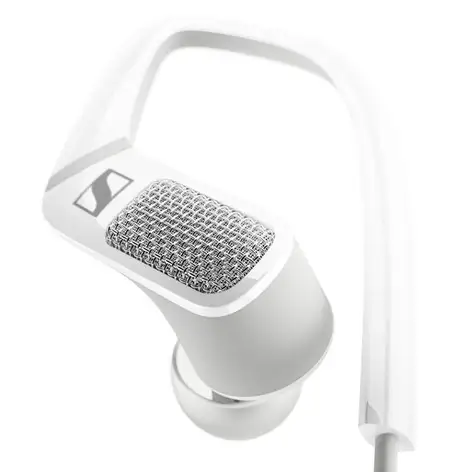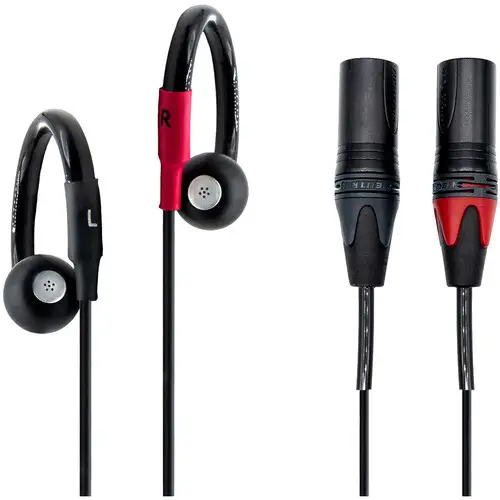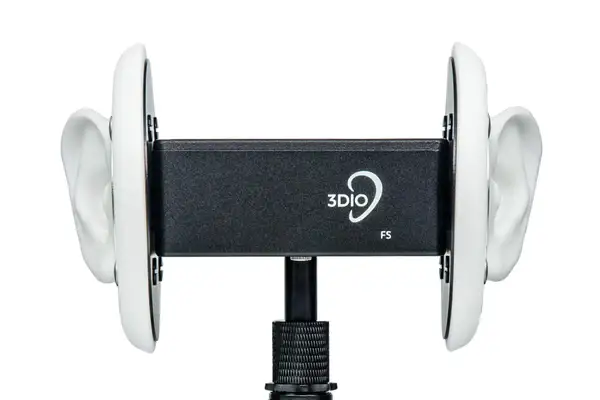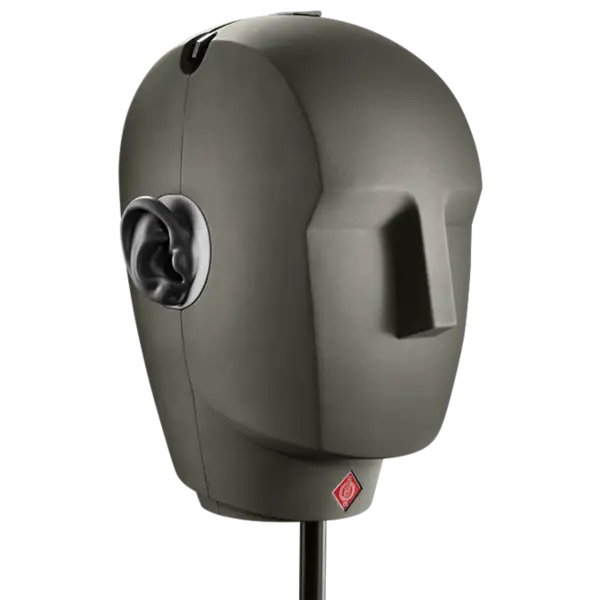Mono. Stereo. Surround sound. Spatial audio. Binaural audio. There’s a whole bunch of different ways audio can be experienced by the listener.
In this post we’re looking at all things binaural; how it works, the difference between spatial audio and binaural audio, how to make your own binaural recordings, and more.
So don your favorite pair of headphones, and get wired for sound.
Definition: What Exactly Is Binaural Audio?
According to Merriam-Webster the true definition of binaural is; of, relating to, or involving two or both ears.
So if you're getting literally literal, everything you experience is binaural audio.
Further confusion stems from the fact that the term 'binaural' was used as a marketing ploy in the 1950s by the recording industry when talking about stereo audio. Technically, they weren't lying, but whatever your feelings about big corporations the term has since moved on.
Nowadays when people talk about binaural audio, they're referring to a specific way of recording audio that mimics the way human ears capture sound waves.
By using this technique, sounds are placed in three dimensions giving the listener a fully immersive experience. Binaural audio places the listener in the center of the recording location, creating a 360° bubble of sonic loveliness for them to enjoy.
However, the magic doesn't work if binaural audio is played over speakers. To get the full binaural effect you need to wear stereo headphones, where the left and right audio channels are isolated in the same way they are in the human hearing.
Is Binaural Audio A New-Fangled Meta Thing?
Most certainly not. Long before Zuckerberg was even a twinkle in his daddy's eye, French engineer and inventor Clément Ader built the first binaural device in the late 19th century. These first crude experiments in binaural audio were used to transmit performances of operas and plays via a telephone system in Paris.
The placement of the microphones along the stage and the special headset worn by subscribers recreated the sound of actors in the stereo field of the stage.
Due to the prohibitive cost of the equipment required to capture binaural audio, and the faff of having to wear a pair of headphones to reproduce the effect, binaural audio retreated into the shadows.
As tech got cheaper and the use of headphones became increasingly popular however, binaural audio began to make a comeback.
Is Binaural Audio Basically Surround Sound With Headphones?
In the world of film and television, sound designers and sound engineers use surround sound to place the audience within a space by sending the audio through speakers placed in different locations around the room or theater.
In other words the audio in a 5.1 mix has been artificially placed in space to create the immersive effect.
Binaural audio on the other hand is recorded in much the same way as real-world sounds are captured by our two ears (more on this later). That, and it only needs two audio channels to weave its magic.
So, in a binaural audio experience the sound waves are being reproduced in the same way they were 'heard', rather than being artificially placed for our brains to interpret.
360° audio technology for films, such as Dolby Atmos, makes use of binaural simulation to adapt 360 soundtracks for use in headphones.
How Does Binaural Audio Work?
To get a better understanding of how binaural audio works we have to look at how the human ear captures sounds.
The human brain is able to locate sounds coming from all around us by figuring out the difference in time between when a signal arrives at our left ear and right ear respectively. Even a difference of a millisecond is enough to tell if sound sources are located to the right or left of us.
But it goes beyond the two-dimensional plane of whether a sound is to the left or right of us. As you probably already know the human ear is composed of several parts, and the outer ear (the flappy bit on the side of your head) filters out sound in intricate ways due to all the folds and curvy bits that make it so ear-like.
Thanks to nature’s high-tech system we’re able to discern if a sound source is in front, behind, to the left or right, above, or below us. An essential survival mechanism, I’m sure you’ll agree.
What makes things even more complicated is that our hearing is affected by the size and shape of our head, an acoustic effect called the Head Related Transfer Function. What’s more, our ears are unique to us so no two people will experience sound in quite the same way.
Given the complexity of the human auditory system it’s no surprise that you can’t just take two microphones and create binaural recordings. But thanks to some fancy technology it is possible to capture audio in t he same way we perceive it in the real world and recreate the immersive audio experience.
How Is A Binaural Audio Recording Made?
Binaural recording works by replicating how we hear sound waves in real life. To do this you need some binaural microphones - basically a pair of microphones set apart by the width of a head.
In fact, one of the most widely respected binaural microphones, the Neumann KU 100, uses an actual dummy head to host the mics.
But that's not all. Remember how the outer ears filter sounds to help with spatial awareness? A true binaural microphone will need to mimic the head related transfer function acoustic wizardry that the human head naturally does. This can be achieved by either using over-ear headsets, or using ear-shaped molds.
Once you have a binaural microphone set up this way you can capture sound the same way our ears do, and record the whole shebang on a simple stereo file.
What Microphones Do You Need For A Binaural Recording?
Once upon a time a binaural microphone would set you back a small fortune. Nowadays you can get them for a more affordable outlay (unless you want to spend oodles of cash). Here's a few to check out.
The Sennheiser Ambeo Smart Headset

This headset from Sennheiser is the most affordable option for creating your own binaural recordings. It features buds that fit over your ear, much like hearing aids or in ear monitors , which house omnidirectional microphones to capture binaural sound.
The resulting audio can be captured by your smartphone allowing you to create videos with a stereo recording in 3D sound.
Sonic Presence SP15 Pro Binaural Microphone

These headphones look like ear buds, but since they house the small microphones, they hang over your lugs rather than being placed inside them.
The left and right channels on this binaural mic need to be plugged into an audio interface to capture the sound. The SP15C model terminates in a USB-C connection rather than XLR, allowing you to connect directly with smartphones and tablets.
3Dio Sound FS Range

With the FS range from 3Dio we're wading into pro-territory. The ear-shaped molds help faithfully re-create sound sources as if they were heard by human ears.
The size and mountability of these mics makes them ideal for videographers or location sound engineers who want to capture 3D sound. The range starts at $400, going all the way up to $2,000.
The Neumann KU 100

The granddaddy of binaural mics, the Neumann KU 100 houses two omnidirectional condenser capsules built into the artificial 'ears' on each side of the dummy head.
In this way the listener can experience the sound as if they were listening with their own ears in the recording position.
The Neumann KU has been used in live performance by the Pittsburgh New Music Ensemble, and is a hot favorite with BBC radio dramas.
What's The Difference Between Binaural Audio and Spatial Audio?
Imagine yourself sat on a stage surrounded by four musicians, forming four corners of a square surrounding you. The cello might be to your front left, the clarinet to your front right, the guitar behind you and to your left, and the shaker (because everyone likes percussion) behind and to your right.
If you made a binaural recording of this set up it would sound the same in terms of instrument placement.
If the physical you on stage changed your listening position by turning your own head to the left or the right, the placement of the instruments relative to you would change. But moving around as you listen to the binaural recording won't change any sound placement.
In spatial audio however the audio moves with the listener's head. So if the above example were in virtual reality, if you turned and faced the opposite direction the shaker and guitar would now be front left and right respectively.
What Is A Binaural Beat?
This is an audio illusion that results when two slightly differing frequencies are sent to each ear, resulting in a perceived new frequency.. As an example if you sent 440Hz to the left ear and 450Hz to the right ear the brain would interpret a binaural beat of 10Hz.
Some claim binaural beats can affect the electrical signals in your brain and cause various states of emotional arousal. Allegedly, your brain activity matches the frequency of the beat to enhance EEG power and providing numerous health benefits, such as helping to reduce stress and improve concentration.
Binaural beats are also often used in VR and AR games to evoke an autonomous sensory meridian response (ASMR) - a physical response (such as sending shivers down your spine) to an auditory stimulus.
While science is undecided on whether this is a real phenomenon or a placebo, binaural beats are all over YouTube, and the ASMR community is still going strong.





